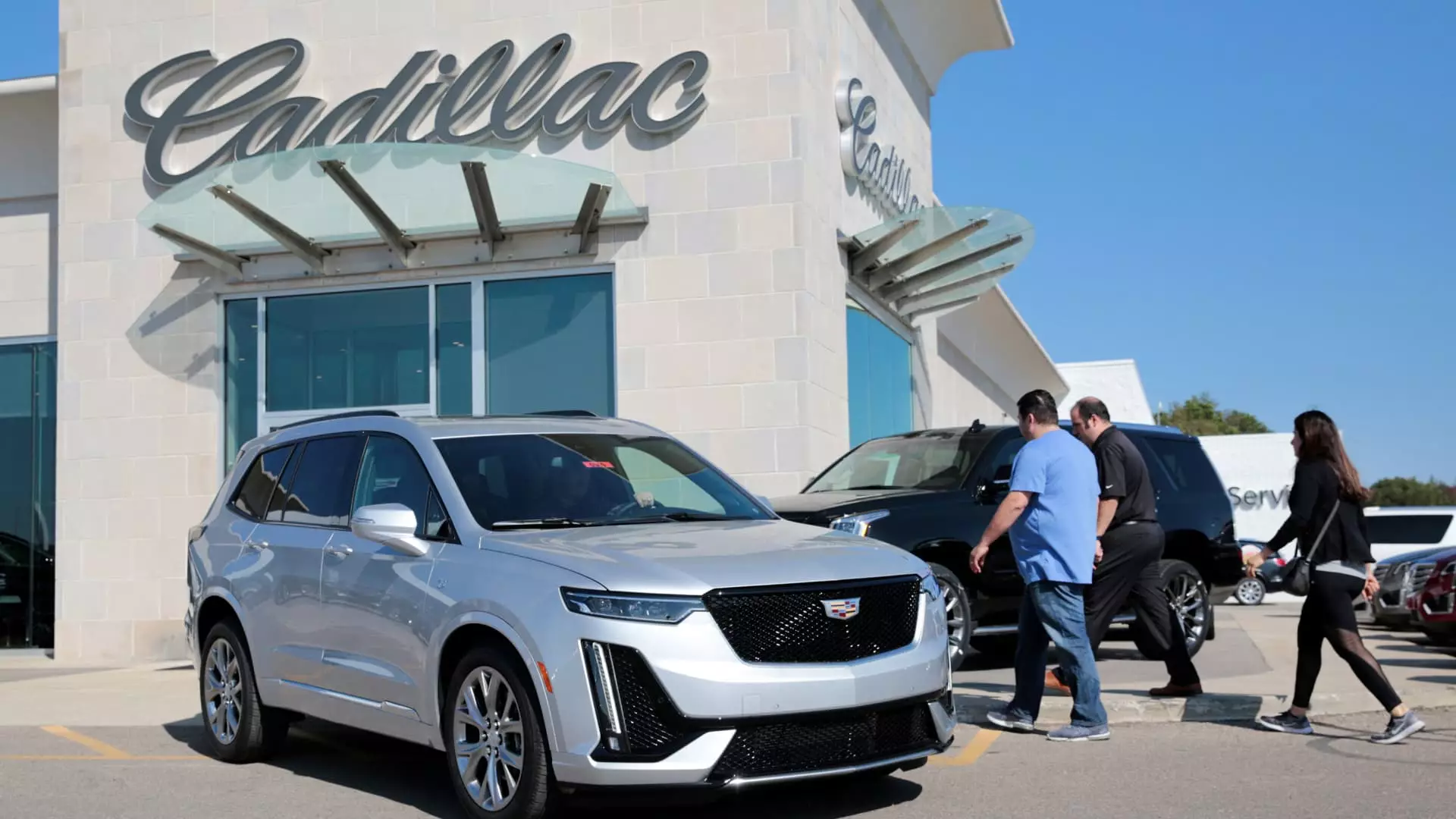In a significant shift indicative of the broader trends within the automotive industry, General Motors has decided to cease production of its gasoline-powered Cadillac XT6 crossover at the Spring Hill assembly plant in Tennessee. While the move may be seen as a strategic pivot toward an increasingly electric future, it also highlights the darker reality of dwindling sales for combustion-engine vehicles. The XT6, which was launched to considerable fanfare in 2019, has failed to resonate with consumers, averaging a mere 19,000 units sold annually. In a market that increasingly favors efficiency and ecological responsibility, this underperformance showcases a palpable disconnect between traditional automakers and modern consumer preferences.
Demand Surges for XT5: A Beacon in the Gasoline Horizon
Interestingly, while halting XT6 production, GM has opted to extend the lifecycle of the XT5, a smaller crossover that has emerged as a surprising success story for the brand. This decision appears driven by “strong customer demand,” according to an internal memorandum conveyed to the workforce. The continued production of the XT5 until at least the end of 2026 seems to affirm that there remains a substantial segment of consumers who are not ready—or unwilling—to make the leap to electric vehicles just yet. The XT5 has cemented its position as Cadillac’s third-best-selling vehicle, trailing the luxurious Escalade and the innovative Lyriq. Perhaps this focused approach to sustain select gasoline models reflects a cautious attempt by Cadillac to balance its forward-looking electric ambitions with the realities of today’s market.
All-Electric Ambition: Embracing Transition amid Uncertainty
Cadillac’s strategic mission to roll out a full lineup of electric vehicles by 2030 signals a bold leap into uncharted waters. However, the company has since tempered its previous ambitions, acknowledging that the consumer shift toward EVs may not occur as rapidly as once envisioned. This is a sentiment that resonates deeply in a world where climate consciousness is on the rise, yet accessibility and practicality remain paramount concerns for many car buyers. While it’s commendable for GM to lead the charge with its electric models, such as the Lyriq and the newly introduced Vistiq—set to succeed the beleaguered XT6—the undercurrent of uncertainty lingers.
Economic Implications: Adjustments Over Optimism
Beyond the transition from gasoline to electric, the announcements regarding scheduled downtime and temporary layoffs at the Spring Hill plant reflect the economic challenges confronting the auto industry. While the company has confirmed these adjustments are linked to inventory management in response to fluctuating demand, they also raise broader questions about job security and the socioeconomic implications of these industry shifts. For workers who have dedicated their lives to manufacturing vehicles, the mere hint of instability can be unsettling. As manufacturers throughout the realm grapple with profound changes, the need for strategic foresight and mindful workforce management has never been more vital.
Cadillac finds itself at a crossroads. The transition to electric vehicles is not merely about product offerings; it’s a comprehensive evaluation of consumer habits, market demands, and the broader socio-economic landscape. As it moves forward, one can only hope that the path it carves prioritizes not only technological advancement but community and workforce resilience in the face of inevitable change.


Leave a Reply